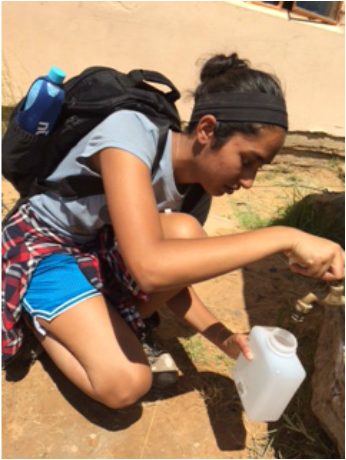
Access to clean water is one of the most pressing challenges facing the world today (Dow). Approximately 1.1 billion people – 15% of the world’s total population – currently have no access to safe, clean water (WHO). In July 2010, the United Nations General Assembly recognized the human right to water that is safe for consumption, but the unfortunate truth is that many UNGA countries that signed on to take the steps necessary to ensure their citizens’ right to clean water are failing to live up to their obligations (End Water Poverty).
In many countries, unsafe water is contaminated with microorganisms including viruses, bacteria and protozoans (UNICEF). If ingested, the resulting diarrhea causes the loss of both water and electrolytes, which often leads to dehydration and death (UNICEF). In fact, diarrhea is the most important public health problem directly related to water and sanitation (UNICEF). Other diseases associated with contaminated water include arsenicosis, cholera, fluorosis, Guinea Worm disease, HIV/AIDS-opportunistic infections, intestinal worms, malaria, Schistosomiasis, Trachoma, typhoid, and many others (UNICEF). Unsafe water directly results in 1.6 million people every year (WHO) -- or 2,200 children every day (CDC) -- dying from diarrheal diseases (WHO). Third world countries use many different methods to purify water and make it safe to drink. I will determine which is the most effective of three water purification methods, based upon which treated sample contains the smallest amount of coliform bacteria. Here is my proposal as well as the results of my chemistry experiment.
In many countries, unsafe water is contaminated with microorganisms including viruses, bacteria and protozoans (UNICEF). If ingested, the resulting diarrhea causes the loss of both water and electrolytes, which often leads to dehydration and death (UNICEF). In fact, diarrhea is the most important public health problem directly related to water and sanitation (UNICEF). Other diseases associated with contaminated water include arsenicosis, cholera, fluorosis, Guinea Worm disease, HIV/AIDS-opportunistic infections, intestinal worms, malaria, Schistosomiasis, Trachoma, typhoid, and many others (UNICEF). Unsafe water directly results in 1.6 million people every year (WHO) -- or 2,200 children every day (CDC) -- dying from diarrheal diseases (WHO). Third world countries use many different methods to purify water and make it safe to drink. I will determine which is the most effective of three water purification methods, based upon which treated sample contains the smallest amount of coliform bacteria. Here is my proposal as well as the results of my chemistry experiment.
My water purification experiment proposal is below.
Your browser does not support viewing this document. Click here to download the document.
My water purification experiment results are below.
Your browser does not support viewing this document. Click here to download the document.
